Ireland & Britain
England & Scotland
Travel Stories
Interests & Hobbies
Outdoors & Activities
Advice for Visitors
About My Ireland Tour
News & What's On

Once you've ticked off your bucket list with Ireland's Popular Attractions and best-known destinations, it's time to explore the lesser-known gems hidden of Ireland. As you begin to discover areas that are usually not included in the 'greatest hits' catalogue of Irish travel, you'll also begin to wonder why. Most of these destinations won't have the queues or activity of, for example, the Guinness Storehouse or Blarney Castle, but they certainly have no lack of character or charm.
Just don't tell the locals we gave up their secret!
Use these links to focus your search on the area of Ireland which you will be visiting.
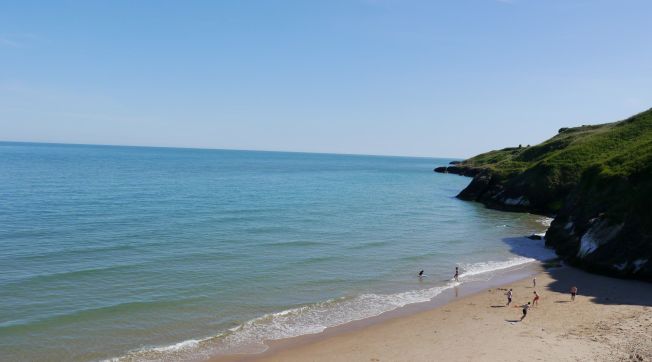
Home to many of Ireland's most-visited attractions, the east coast (known as Ireland's Ancient East) is also home to a wealth of hidden treasures. The destinations listed here may attract less of a crowd than some of Ireland's more signature tourist traps, but there is much reward for the discerning visitors who make the trip.
Phoenix Park is one of Europe's largest open parks. The park is lined with running/cycle trails and has countless locations for picnics and other activities. The sprawling park is also home to roughly 500 wild deer. Photo opportunities with the deer, and the park in general, are endless. Phoenix Park is the perfect location to get away from the hustle and bustle of city life.
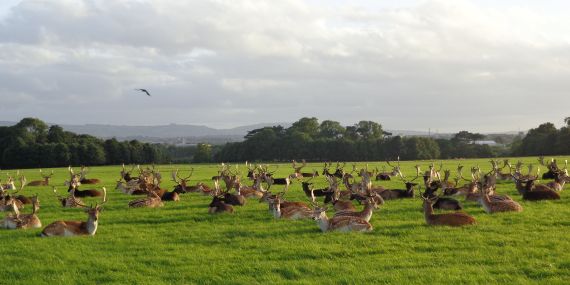
If you're feeling active, then be sure to hire a bicycle to take in the full expanse of the park. Phoenix Park Bikes are located just inside the main gate on Parkgate Street.
Pack your longest-range lens if you have a fancy camera. The deer are beautiful but they tend to be most compliant with photographers who are far away!
Visitors who set off in search of ramparts and turrets are likely to walk past Dublin Castle in search of something more medieval-looking. So, be warned that there won't be jousting and suits of armour. For 700 years, the bastion of British rule in Ireland, the castle is really a Victorian architectural mish-mash, and wouldn't look out of place in London or Paris.
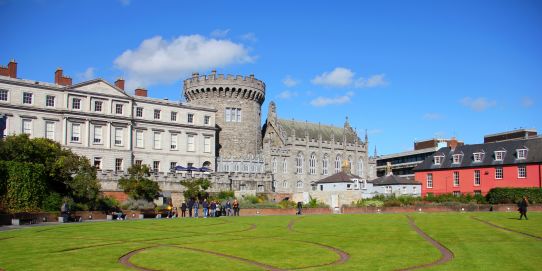
This is perhaps one of the more sedate attractions you'll find set against Dublin's bustling backdrop, and it's certainly not a day out for the kids, but the 45-minute tours are frequent and informative. A visit to the castle will appeal to anyone who has a keen interest in Irish history.
Especially for visitors following a tour guide for one quick 'lap', Dublin Castle will be more of a short visit than a full day out.
Use the free Wi-fi access in the Castle to download the Dublin Castle app.
The castle grounds and gardens are free to explore. A self-guided guided visit to the State Apartments is available and takes about 40 minutes. Guided tours are also available. You can get a brochure in 17 different languages or download the free Dublin Castle app.
Open 7 days a week from 9.45 to 17.45, with last admission a half-hour before closing.
A splendid neoclassical building designed by Sir Thomas Newenham Deane and completed in 1890. The original building is generally considered the most significant and most important for visitors to see on their Ireland tour.

Among the museum's most notable attractions are various Bronze and Iron Age artefacts, including The Ardagh Chalice, the Tara Brooch, the Broighter Gold Collar and the Loughnashade War Trumpet. Equally stunning is the Cross of Cong, which was crafted in 1123 A.D.
A great day out for kids & grown-ups and entry is free. But adults travelling without children may prefer the quieter times on weekdays during Irish school terms.
Built between 1745 and 1748 as the city residence of the Duke of Leinster and Earl of Kildare, James Fitzgerald. This attraction is most notable for politically-minded visitors - it is home to the Houses of the Oireachtas, the seat of government in the Republic of Ireland. Watch politics in action as the laws of the land are made right here before you.

If you are interested in seeing politics in action, remember to check that the Dáil Éireann and Seanad Éireann chambers of parliament are sitting at the time of your visit.
Keep in mind that you will have to go through security and provide photographic ID. To speed things up, it is a good idea to register in advance.
The original Poolbeg Lighthouse was, allegedly, the first lighthouse in the world to run on candlepower when it was built in 1768. It changed to oil in 1786. The structure that survives today was built in 1820. Poolbeg Lighthouse stands on the Great South wall of the Port of Dublin, extending nearly four miles out into Dublin Bay.
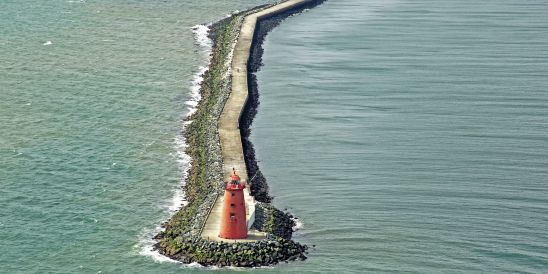
On the four-mile walk along the seawall to the lighthouse, you are very exposed to the elements. So this is definitely one to be enjoyed on a warm, sunny day or wrapped up warm on a crisp winter's morning.
The pathway is a little uneven in places. Those with lower mobility may find the walk to be a challenge. There is a place to sit and rest halfway.
Mount Pelier Hill is a 383-metre hill which is commonly known as the Hell Fire Club, the popular name given to the ruined building at the summit.
The ruin was originally a hunting lodge built sometime around 1725 by William Conolly, an Irish politician. It was known as Mount Pelier until it was taken over by the Irish Hell Fire Club in the 1730s. It is said that the location was then used as a meeting place for occult and other spooky or deviant practices.
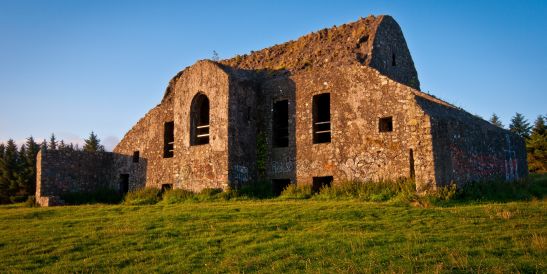
The original building was constructed on an ancient passage tomb. Its roof was blown off in a storm shortly after its completion, leading locals to believe that the building was haunted... by a giant black cat.
Visitors who are not put off by spooky locations or steep walks will enjoy a stunning view on a clear day.
Built in 1796 and officially known as County of Dublin Gaol, Kilmainham Gaol takes its name from the town in which it is located. For the first 44 years of the jail's existence, there was no segregation of prisoners. Men, women and children were kept in the same cell, five in each, and only a solitary candle was made available for light and warmth. Each candle was to last a fortnight at a time.
In 1840, a female section was eventually built—just before the Great Famine and an unprecedented surge in prisoner numbers. Around this time, the majority of adult prisoners were transported to Australia.
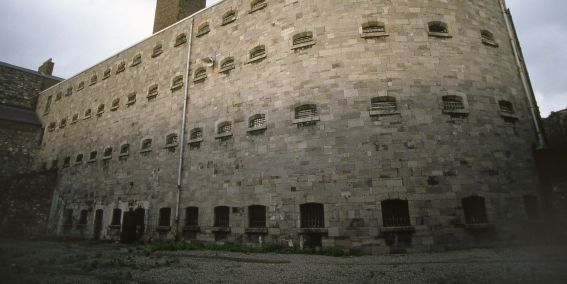
In terms of Irish history, Kilmainham Gaol is most remembered for its connection with the Irish Civil War. It was used as a detention centre by the British Army for their opposition prisoners of war. Martyrs of the Irish cause, such as Padraid Pierce and James Connolly, were executed here during the 1916 uprising.
A good way to prepare for a visit to Kilmainham Gaol is to watch some of the films that were partially shot there, including The Italian Job, In the Name of the Father and Michael Collins.
For his service to the crown, Richard Talbot was given the lands and harbour of Malahide in 1185. Talbot originally built a wooden stronghold and eventually a stone structure on the site of the current Malahide Castle. The Talbot family lived on the grounds from 1185 until the 1970s. Their time here was only interpreted from 1649 to 1660 when Cromwellian soldiers took over the castle. Lord Milo Talbot was to become the last Baron of Malahide. After his death in 1973, his sister Rose inherited the land and sold it to the Irish State in 1975.
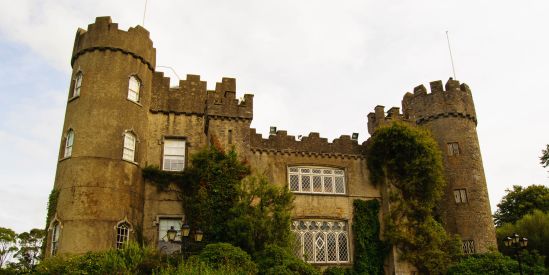
Today, you can visit the Malahide Castle on a guided-tour-only basis and private rooms can also be booked for functions. The castle welcomes thousands of local and international visitors each year, as well as playing host to social and political summits and gatherings.
A visit to Malahide Castle takes around one hour to complete so the Avoca self-service café, food market and store are a great addition the grounds and a lovely way to relax after your tour.
Located just a 10-minute drive from Dublin Airport, Malahide Castle is a great way to start or end your tour of Ireland. And, if you're travelling with kids, there's endless entertainment in the fairy trails, the butterfly house and the botanical gardens.
Malahide Castle is open daily from 9:30am to 5:30pm.
Prices of tickets to Malahide Castle range from £16 for an adult to £10 for a child.
The Book of Kells is believed to have been created in 800 AD. It is an illuminated manuscript Gospel book written in Latin and comprised of 680 pages. It contains the four Gospels of the New Testament. The Book of Kells is today known as one of the last remaining masterpieces of Western calligraphy and illumination and is housed in Trinity College Dublin. Until 1654, the book was kept in the Abbey of Kells in County Meath. It was sent to Dublin for safekeeping as Cromwell's cavalry had taken over the church at Kells. Besides being loaned out to other libraries and museums, the book has been displayed in the Old Library at Trinity College since the 19th Century. To aid in its preservation, the book was rebound in four separate volumes in 1953.
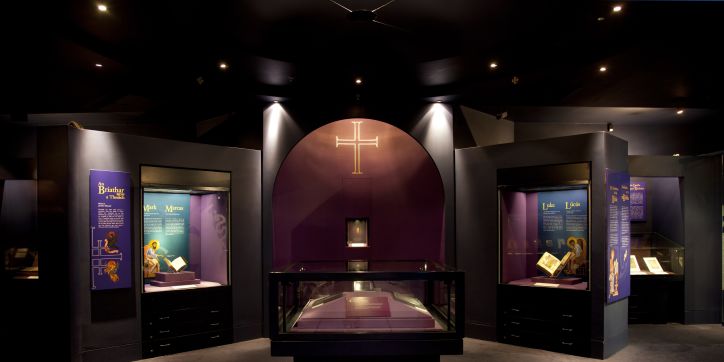
In Trinity College today, two of the volumes are on permanent display, one shows a page of illustration while the other shows a page of text. The town of Kells in County Meath started a petition in 2011 in order to have at least one of the volumes returned from Dublin. This petition was eventually turned down as transportation could damage the book.
When visiting the Book of Kells, try to schedule some time to explore Trinity College and its stunning grounds while you're there.
Fought in 1690 between two rival claimants of the English, Scottish, and Irish thrones, Catholic King James II and protestant King William III of Orange, the Battle of The Boyne would shore up the growing strength of Protestantism in Ireland, precipitating James's swift departure for safety in France.
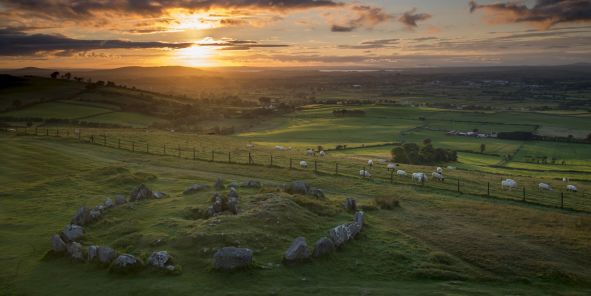
The battle itself was fought on a stretch of land between the counties of Meath and Louth which now belongs to the Oldbridge Estate Farm. On-site, there is a visitor centre with a short show, original and replica weapons, and a battlefield model. There is also a tea pavilion to which the battle-weary can retreat for hot drinks and cakes.
For information about great driving routes in this area, look up www.boynevalleyroute.com - a really useful resource for those considering a self-drive tour of East Ireland.
Stop at Oldbridge House to pick up a map of the grounds. The gardens are free to visit, but there is a charge to see the house/museum (approx. €5 per adult).
The battle site is located about 6 km to the west of Drogheda. You will find a visitor centre and parkland walks at the battle site. At the visitor centre, housed in the 18th century Oldbridge House, you can watch an audiovisual film, explore a laser battle site model and find real and replica weaponry.
The visitor centre is open daily from May to September from 10:00 to 16:30. And in October to April from 9:00 to 16:00.
The exit gate of the car park closes at 19:00 sharp.
An adult ticket will cost €5, a ticket for a child/student €3 (children under 12 are free) and a ticket for a senior will cost €4.
Accessible by car, this is also one for the thousands of hillwalkers who visit Ireland each year. Sally Gap offers visitors some of the most beautiful scenery you will find anywhere on your tour of Ireland, so don't forget to bring your camera. Along the way, you'll find breathtaking views of the surrounding blanket bog and the stunning Wicklow Mountains. The road through Sally Gap, which to this day is still known as Military Road, was created by the British Army in 1798. The primary aim of the road was to flush opposition rebels from the hills.
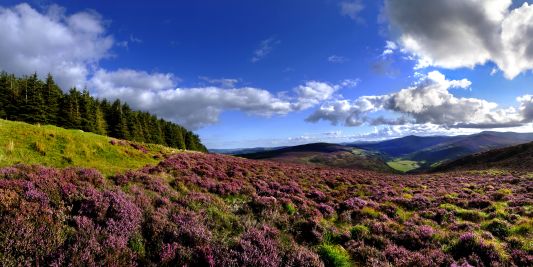
Along Military Road, you'll find Glencree's Visitor Centre, which was originally used as a base by British soldiers guarding the pass. You'll also come across Glencree War Cemetery. The cemetery is Ireland's only German Military resting place, it contains the graves of Luftwaffe Air Force pilots who crash-landed in the area, and members of the Kriegsmarine Navy who would have washed up on the surrounding beaches.
Early mornings can be a bit misty at the top, so wait until late morning or early afternoon to get the best views. Keep your eyes open for sheep in the road as you're driving.
The many small towns along Ireland's east coast are a dream for anyone wanting to uncover the real face of Ireland, known and loved by the locals.
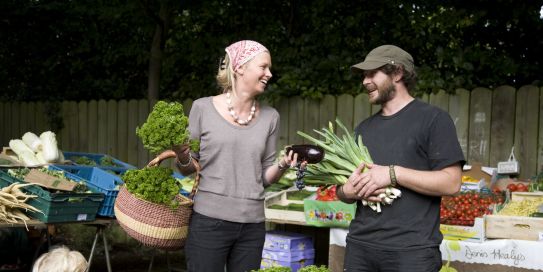
As just one example, while perhaps less well known for its own tourist attractions, Kildare Town remains a great little stop-off for those who want to experience the bustle of East-Ireland life.
Similarly, Trim in County Meath is a quaint town sitting in the shadow of its dramatic castle and ruins. You'll find a busy bustle of little streets so look out for your souvenirs here. Also, look out for St Brigid's Cathedral before heading over to the Irish National Stud. Another town of note, 30 miles north of Dublin, Drogheda straddles the River Boyne. There is a great museum here and plenty of beautiful old buildings.
Head for the local tourist information office to get a map of the town. Staff will be happy to give advice on where to find the shops and eateries which appeal to your group.
The Jealous Wall is a 'sham-ruin' or folly, a building designed with no other reason apart from decoration, constructed in Belvedere House and Gardens, County Westmeath. It is one of three Gothic follies found on the gardens, along with the Gothic Arch & the Octagonal Gazebo.
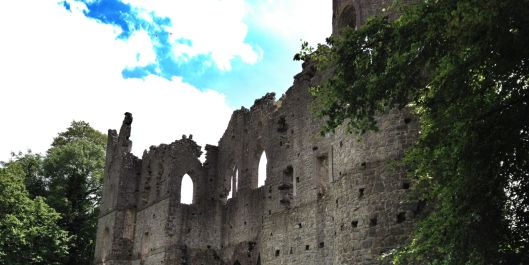
It is said to have been built by Robert Rochfort as a way to block the view of his brother George's house. George, apparently, had a nicer-looking house.
Dogs are welcome in some parts of the grounds, but not in the walled gardens. If you're bringing your four-legged friend, be sure to check at the Belvedere House on arrival.
Revealing the location of this small beach could land us in some hot water with the locals. Silver Strand Beach, about a 10-minute drive from Wicklow Town, remains relatively unknown compared to the beaches closer to Dublin: Howth and Portmarnock. The difference between those two beaches and Silver Strand is that Silver Strand is never overcrowded and has silky smooth sand instead of fine course stones disguised as sand.
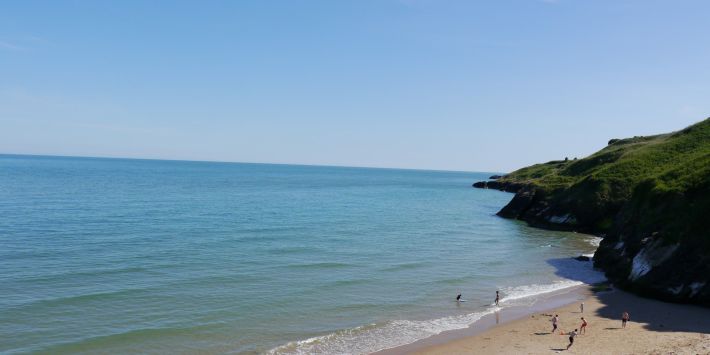
The cliffs surrounding the beach keep the wind to a minimum and the blue water, combined with the silky sand, could trick you into thinking that you are on a beach in the Mediterranean... weather permitting of course.
For an amazing view, head over to Wicklow Head lighthouse to capture some truly breathtaking views. A ten-minute drive or a 50-minute walk will bring you to this amazing outlook which links up nicely with Glen Beach cliff walk.
Lough Dan is a picturesque, boomerang-shaped, lake in County Wicklow. It remains relatively unknown by tourists but is hugely popular with locals for kayaking and hiking. Lough Dan has an average depth of 44ft.
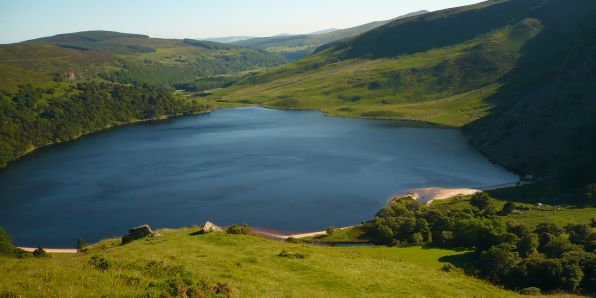
There are various small accommodation options in the area for the many visitors who find that one day just isn't enough in this truly idyllic setting.
Pass the Scouts Centre and keep going to the entrance gate to the walking route. Continue past the big gates, the path will lead you to the lake and a beautiful white beach.
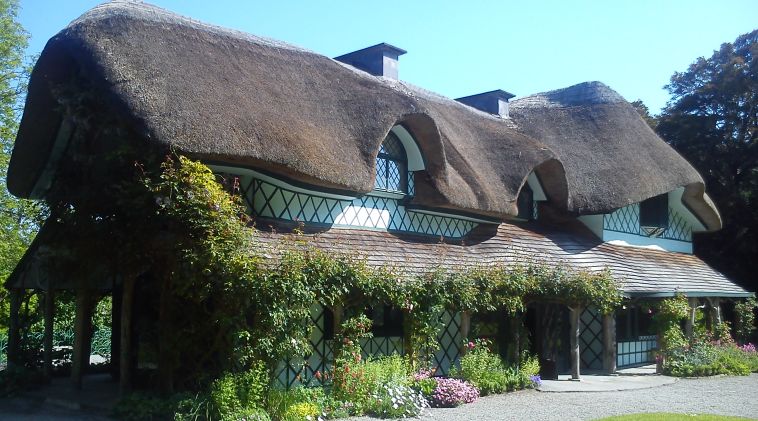
Typically a little bit warmer and drier than other regions of Ireland, the South East is also a little bit quieter compared to the more bustling tourist traps of Dublin, Killarney and The Wild Atlantic Way. For those who venture here, the rewards are immediately obvious.
The Glen of Aherlow is a valley found in the western part of County Tipperary, between the Slievenamuck and Galtee Mountains. The main village of the valley is Lisvarrinane. The Irish poet and Catholic priest Geoffrey Keating took refuge in the caves of the valley while on the run and writing his masterpiece 'Foundation of Knowledge on Ireland'.
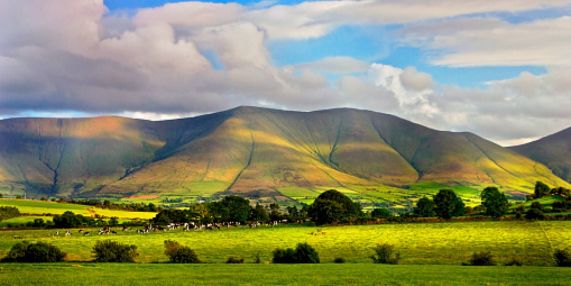
Keen walkers and occasional strollers will be equally glad they looked up the eight looped walking trails that are marked here. Five of these start at the Christ the King Trail Head. The rest all begin at Lisvarinane Village Trail Head. Distances range from one mile to four miles.
The car park at the popular 'Christ the King' statue can get quite busy during the summer, but it is from here that the best views of the glen and valley can be enjoyed.
The Swiss Cottage is located near the town of Cahir in County Tipperary. It was built around 1810 by Richard Butler, the first Earl of Glengall—who later went on to marry Emily Jeffereys of Blarney Castle. The cottage was a part of the estate of Lord and Lady Cahir and gets its name due to its resemblance to an Alpine cottage. The most striking feature of the Swiss Cottage is its traditional thatched roof. The woodwork, on the exterior of the cottage, was designed to resemble tree branches. The interior features a spiral staircase and colourful, nature-inspired décor. The salon is decorated with wallpaper manufactured by the Dufour factory.
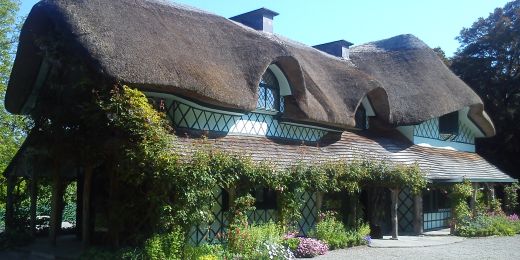
During the 19th century, the cottage was used by the local gentry as a place where they could, in one of the stranger pass times of the times, live as peasants. Judging by the lavish interior of the cottage, in comparison with the homes that actual peasants would have lived in, the gentry were a long way off finding realism here. The Irish Georgian Society restored the cottage in 1985 and was opened to the public in 1989 as a historic house museum.
It is worth noting, any groups of ten people or more must be pre-booked. If you have a little more time, Cahir Castle is a seven-minute drive from the Swiss Cottage. There, you can book a guided tour or simply soak in the scenic sense of history.
A 30-minute walk, called Coronation Walk, along a riverside path will lead you to Cahir Castle.
The Swiss cottage can be found 2 km south of the Heritage Town of Cahir. Entrance to the cottage is by a guided tour only, lasting 30 minutes. During the summer this is a very busy site.
Open from mid-March to October from 10:00 to 17:00.
An adult will pay €5 and a child €3. All groups of 10 or more have to be pre-booked.
Dunmore East is a fishing village in County Waterford. It is located in an area that saw a huge influx of Norman and Viking invaders and eventually settlers (circa 795-1170 B.C). There are mentions of the village being active as a fishing port as far back as 1745. At the time, the homes of the fishermen were mainly located in the Lower Village. A historical document, from 1776, mentions that there was a fishing fleet of as many as fifty boats working off the coast.
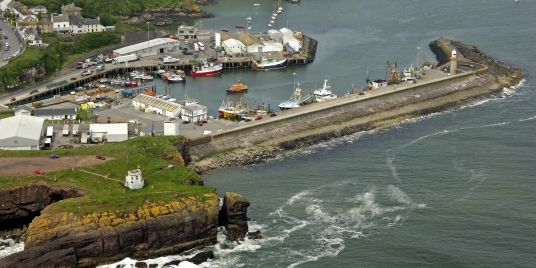
In 1812, the British government made the decision to locate a new landing port for passengers and mail, coming from England to Ireland, in Dunmore East. The construction of the pier took until 1837 to complete, at a cost of £108,000. By then the decision was made to have the Royal Mail station relocated to Waterford City. Today, Dunmore East is a thriving village, buoyed mainly by fishing throughout the year and by tourism in the summer, thanks in part to the huge number of cruise liners that dock there.
Arrive with an empty stomach: Dunmore East is known for its fabulous food and drink. If you like seafood, you won't find much better or much fresher than this.
The 18th-century is perhaps one of the most formative times in the history of Western democracy. It is also one of the bloodiest. The American and French revolutions would have a significant effect on the Irish sense of identity, not to mention the revolutionary spirit which ran through it.
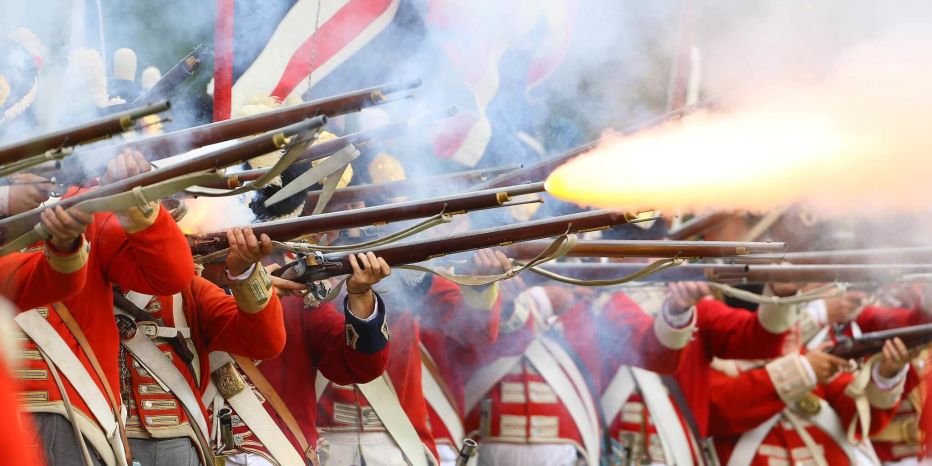
The 1798 Rebellion Centre charts the history of the attempted revolution of that year, thwarted by British military superiority and the ruthless deployment of spies, informants and torture tactics. After a bruising campaign, the Irish rebels regrouped on Vinegar Hill in Enniscorthy, County Wexford, where they would make their final stand against the British. The result was a crushing defeat for the Irish, whose superior numbers could not make up for the firepower of the redcoats below. Armed mostly with pikes, the Irish dead would number high in the thousands. The museum offers a 4D audiovisual interpretation of the battle.
A good percentage of information in the exhibition is text-based and, even for the people with 20-20 vision, can be difficult to read from a distance. If you are short-sighted be sure to bring your glasses.
The recommended duration of a visit is 1 to 2 hours.
The 1798 rebellion Centre is open on Monday to Friday from 09:30 to 17:00 and closed on weekends and bank holidays. Last admission is at 16:15.
There is no admission fee to the Vinegar Hill Battlefield. Admission price for the National 1798 Rebellion Centre is €7 for adults, €5 for students & seniors and €20 for a family ticket (2 adults & up to 3 children).
With its monumental round tower, St Canice's Cathedral rises majestically above the north of Kilkenny's city centre. Perhaps understandably so: ranking just behind St Patrick's in Dublin, it is Ireland's second-largest medieval cathedral. Gothic in style, it is characterized by its iconic round tower which affords commanding views of the surrounding area. There are only two round towers in Ireland that you are allowed to climb and this is one of them.
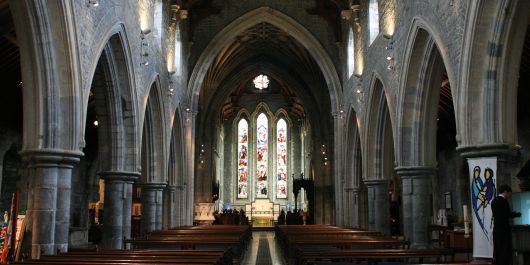
The history of the building itself, long and varied, began - at least according to legend - in the Sixth Century with the establishment of a monastery there by St Canice, Kilkenny's patron saint. Inside the building you will find the tomb of Bishop Ledrede. In the 14th Century, the bishop accused Alice Kyteler of witchcraft. The first person in the Irish records condemned for Witchcraft
Reach the top of the round tower by climbing the steep ladders with 121 steps. The view that awaits is worth the effort. Children under 12 are not allowed to make the climb.
Check if any music events are happening during your stay & experience the cathedral's natural acoustics.
The Cathedral and round tower can get busy and are operated on a first-come, first-served basis. An early visit is advised. You can get information leaflets in 15 different languages at the ticket desk.
You can visit St Canice's Cathedral seven days a week. Last admission is always 30 minutes before closing.
From October to March opening hours are 10:00 to 16:00 (Monday to Saturday) and 14:00 to 16:00 (Sunday).
In April, May & September opening hours are 10:00 to 17:00 (Monday to Saturday) and 14:00 to 17:00 (Sunday).
From June to August opening hours are 09:00 to 18:00 (Monday to Saturday) and 13:00 to 18:00 (Sunday).
Admission to the Cathedral is €4.50 for everyone over 16. Students will pay €4. A family ticket for 2 adults and 2 children can be bought for €12. You can also purchase a combination ticket for the cathedral and tower climb for €6.50.
Founded in the second half of the Twelfth century and recently partially restored, Jerpoint Abbey is one of Ireland's finest Cistercian ruins. It is located close to Thomastown in County Kilkenny. The main church, with its Romanesque flourishes, dates from these earliest days in the abbey's long history, but visitors will also find tombs dating from the thirteenth and sixteenth centuries, the tower and the cloisters date back to the fifteenth century. Look out for figures carved into the cloister pillars, some of them are quite entertaining.
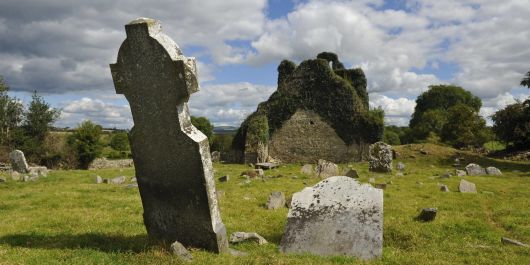
The abbey itself was built around 1180 and was dedicated to the Virgin Mary. Jerpoint Abbey continued to prosper until the English King, Henry VIII, called for the 'Dissolution of the Monasteries' between 1536 and 1541. The last abbot of the abbey, Oliver Grace, surrendered it to the king during this time. Since 1880, Jerpoint Abbey has been classified as a national monument and has been in the care of the Office of Public Works.
Drivers should note that the free-to-use car park entrance/exit is on a blind bend. Take care when leaving!
A guided tour will help bring the history of the site to life.
You will find the Abbey 2.5 km southwest of Thomastown. There are guided tours available and you will find an excellent exhibition in the visitor centre. For the children, there is a treasure hunt with saints, knights mythological creatures and more available in the visitor centre. The recommended duration of your visit would be around an hour.
During December to March a visit is possible by pre-booked tours only. Jerpoint Abbey is closed for the Christmas period.
From early March to September opening hours are 09:00 to 17:30 daily.
In October opening hours are 09:00 to 17:00 daily.
From November to the beginning of December opening hours are 09:30 to 16:30 daily.
An adult ticket can be purchased for €5 and a ticket for a child for €3.
A secluded seaside village in Waterford, Ardmore attracts summer visitors to its long, sandy beach, as well as its cliff walks, shops and early Christian monuments. Visitors should add to their to-do list any and all of the following depending on your interests and group make-up: St Declan's Cathedral and Round Tower, Ballyquin Beach and Ardmore Pottery which will leave you well placed to finish the day with a cliff-top stroll before dinner.
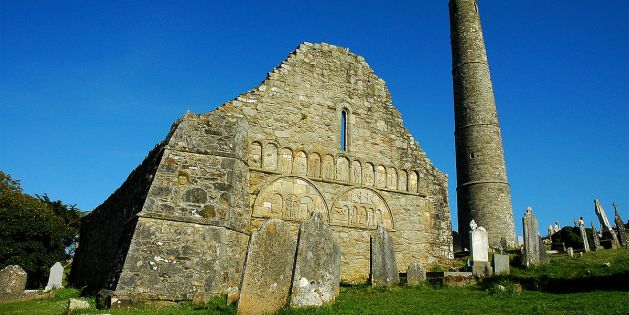
Ardmore's clifftop hotels offer unbeatable views to anyone looking to spend the night in this charming village retreat.
Dungarvan is a harbour town located at the heart of County Waterford, nestled beneath the Comeragh mountains. It has a population of just over 9,000 people, which increases significantly during the summer months. An excavation in Dungarvan, in the late 1800s, unearthed Ireland's only ever recording of Mammoth elephant bones. The town became one of Ireland's first urban centres, after a large Anglo-Norman fortification was established here in the 12th century. In 1649, Oliver Cromwell chose not to attack the town after a woman offered him wine as his army marched across the city gates.
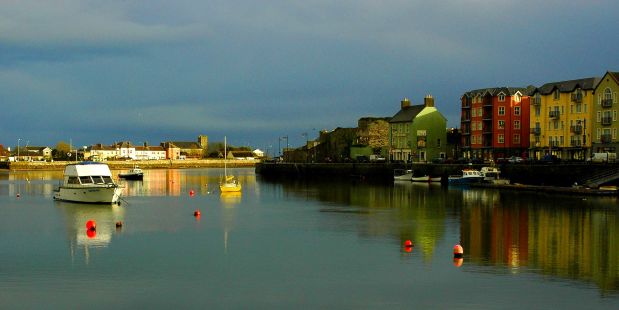
Over recent years, Dungarvan has gained a reputation as a must-see destination for all foodies visiting Ireland, it is home to the regular farmers' market, the Waterford Festival of Food, and the Tannery Restaurant & Cooking School.
If you're feeling active, Dungarvan is the starting point for the popular Waterford Greenway cycle route. In addition to the great food, a day of rest here offers a wealth of good horticulture, art and retail therapy. There are also three golf courses within a 10-minute drive of the town.
This stunning region of south-east Ireland was declared a European Geopark in 2001 and a UNESCO Global Geopark in 2004. It earned its name following generations of metal-mining industry, the legacies of which now make the region such a tourist attraction. Today, it retains all of its geological diversity, with various marked walking trails offering unique access to this most charming face of Ireland stretching over 17kms of rugged coastline from Kilfarrasy to Stradbally.
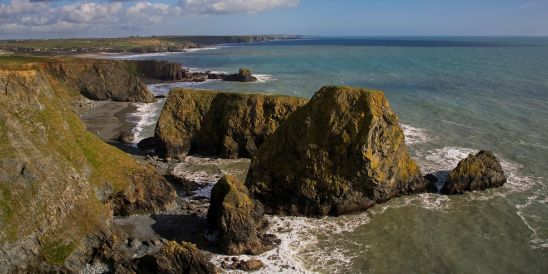
Visit the exhibition, suitable for all ages, at Copper Coast Geopark centre to learn more about the history of copper mining and the geology of the area. Pick up one of the walking trail cards there as well on the different trails and walks near Annetstown, Boastrand, Bunmahon, Dunhill, Fenor, Stradbally... Audio tours and guide services on the trails of the Copper Coast are also available.
This iconic setting is unspoiled by retail, so bring everything you need including cash for a quick stop at Tom Hayes Pub.
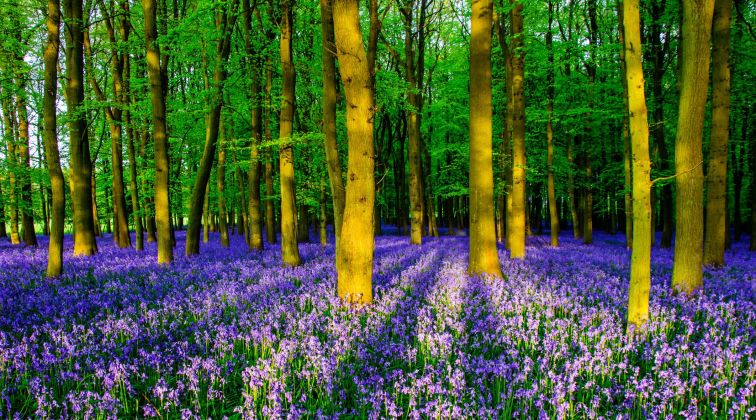
Visitors to the headline west-coast attractions like The Cliffs of Moher will find so much else to discover within an hour's drive. Here, points of interest blend so naturally with the rural terrain that it's like they're hiding in plain sight. Sprawling fields of green that flow into a giant cliff face. An ancient monastery that seems to be a continuation of the stone walls that surround it. What will you discover in Ireland's west?
Found in one of the most northerly parts of County Clare, Flaggy Shore is a geologist's dream. Made up of mainly grey limestone there are also the remnants of glacial rock from the last ice age, over 12,000 years ago, in the form of granite and limestone. Fossils of creatures from over 330 million years ago have also been found in the limestone. For us non-geologists of the world, Flaggy Shore is also just a simply beautiful sight.
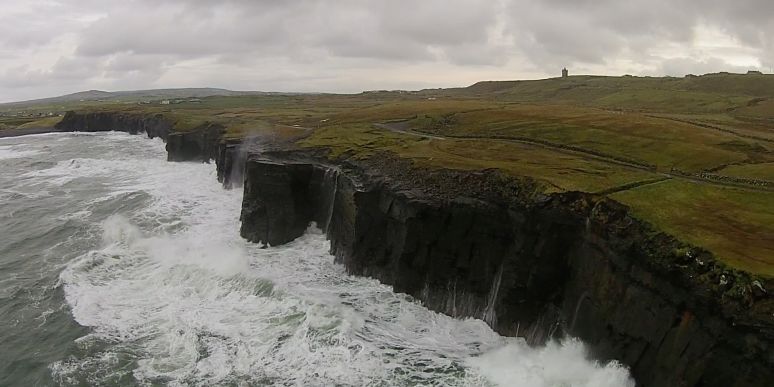
Be advised that perhaps the biggest attraction of Flaggy Shore could also be seen by some as its biggest downside. Namely, there is nothing there but nature and peaceful solitude. Bring everything you need to this very isolated spot.
Kilmacduagh Monastery is located just outside the town of Gort in south west County Galway. Today only the ruins remain. Saint Colman is said to have founded the monastery in the 7th century. Legend has it that as Saint Colman was walking through the woods of the Burren when the belt from his robe fell to the ground. Saint Colman took this as a sign that this was to be the location of his monastery.
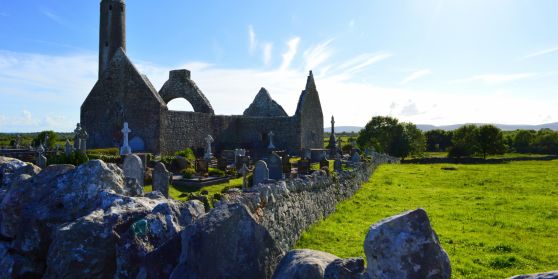
It was also said that in the village of Kilmacduagh, no man will die from lightning. This myth was tested when a man was struck by lightning and send over a ditch, into the neighbouring County Clare, where he was declared dead. It is not known if he died when he was stuck or after he crossed the border, so the myth lives on.
An ideal detour en route to the Cliffs of Moher. Just an hour's drive will take you from this most peaceful retreat to the much busier tourist hotspot to the West.
There is plenty of space to park your car. As Kilmaccduagh is an open site, you ar free to roam the site without having to pay an admission fee. However the buildings might be locked. For a small deposit, you can get a key from the house across the street.
Another of Ireland's best kept secret beaches, found on the western shores of Achill Island in County Mayo. Framed by such an enchanted landscape, many visitors will find the journey here just as rewarding as the day out itself. A truly stunning location.
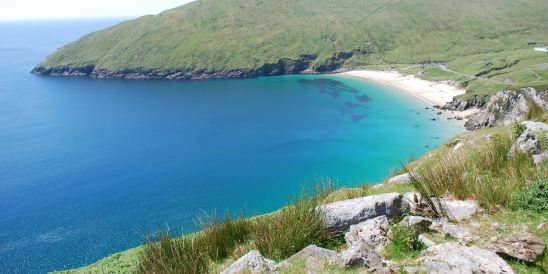
Achill's most remote blue flag beach is a great place for water sports and you will find surfing schools in area. At the right time of the year, you might even spot some dolphins or a basking shark from the beach. See our page on Irish Islands for more hidden treasures like this one.
Visitors are advised only to swim if there is a lifeguard as there is a very strong riptide. Even then, it would be best to swim with a partner and at a depth that you are comfortable with.
Located just north of the village of Ballycastle in County Mayo, Downpatrick Head is a heritage site that gives visitors a unique view of the Atlantic Ocean. The Dún Briste sea stack lies close by, which looks like a chunk of Downpatrick Head that has been cut away from the mainland. Also found on Downpatrick Head are the ruins of a church founded by Ireland's patron saint Patrick, a holy well, a stone circle and nesting sea birds.
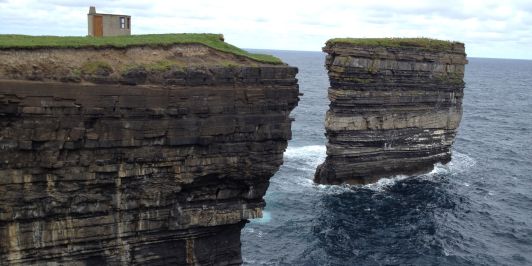
Photographers will remember this visit forever, but watch your step and follow the signage on these treacherously high cliffs.
Dereen Woods, also known as Bluebell Woods, is located outside the town of Boyle in County Roscommon. A magical setting throughout the year, the woods become even more special during the spring when they are carpeted with Bluebells. On a clear spring morning, Bluebell Wood is one of the most unique sights in Ireland.
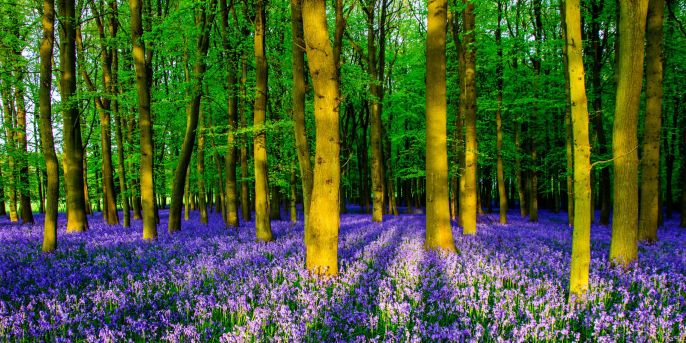
Visit mid-April to late May to get the full effect of the bluebells in bloom. Be advised that there is limited parking, especially during this more popular time.
The Spanish Arch arguably stands out more because of the vibrant atmosphere which pervades the surrounding area, particularly in summer when visitors and locals mingle together, eating out in the sun and enjoying the buskers and street performers. The arch itself is thought to be part of the original medieval city walls.
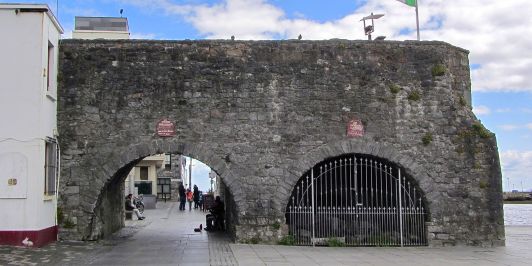
The Spanish Arch arguably stands out more because of the vibrant atmosphere which pervades the surrounding area, particularly in summer when visitors and locals mingle together, eating out in the sun and enjoying the buskers and street performers. The arch itself is thought to be part of the original medieval city walls.
This is a great spot to sit and eat outdoors. But keep an eye on your lunch: there are many seagulls here and they'll be very grateful if you leave a tasty snack unguarded.
Cong is a village on the border of counties Mayo and Galway, with a population of just 145 people. It is best known as being the location for the John Ford directed, John Wayne starring film The Quiet Man. The film remains one of the few Hollywood productions where the Irish language can be heard. Filming started in Cong in the summer of 1951 and employed numerous actors from the Irish Theatre, as well as extras from the surrounding countryside. Every outdoor scene in the film was shot in County Galway and County Mayo. While the majority of the film was shot in the village of Cong, it is set in the fictional village of Innisfree.
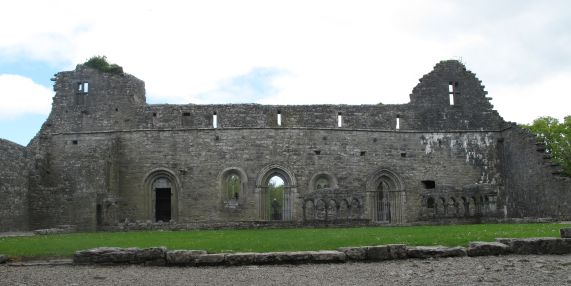
Another notable aspect of the village is that it was home to Sir William Wilde, the father of — arguably — Ireland's most famous writer Oscar Wilde. Today, as well as visiting The Quiet Man museum, the most popular destinations of Cong include Cong Abbey and Ashford Castle.
For a truly luxurious experience, you might consider an overnight stay in nearby Ashford Castle - arguably Ireland's most opulent castle hotel. Ideal if you're looking to treat yourself on one or two nights of your stay in Ireland.
Situated on the Clare and Tipperary banks of Loch Deirgeirt respectively, Killaloe and Ballina offer a tale of two cities ... well, two villages, perhaps. Close enough to be considered one destination, they have quite distinctive and different characteristics. Pack your camera before you head to Killaloe, the epitome of beautiful County Clare; then use it to get some foodie snaps over dinner in Ballina, where you will find fantastic pubs and restaurants.
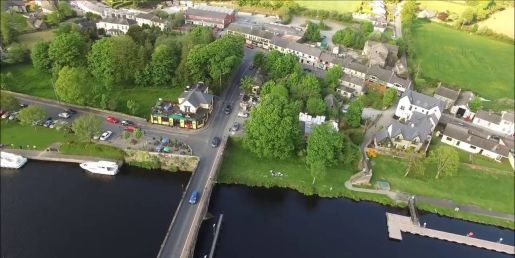
Be sure to stop here if you are into watersports, if you enjoy a good day's fishing, or if you're tempted by a boat cruise up the River Shannon to Lough Derg.
Located in County Galway, Connemara National Park is one of Ireland's six national parks. Founded and opened to the public in 1980, the majority of the land had previously been part of the Kylemore Abbey estate. Evidence of human settlement across the park include 4,000-year-old megalithic court tombs and a 19th-century graveyard.
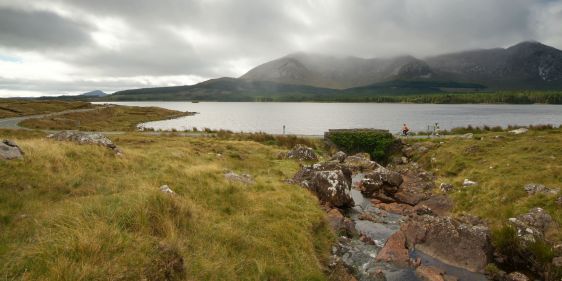
Comprising three thousand hectares of mountains, bogs, heaths, grasslands and woods, Connemara National Park is a nature-lover's paradise; home to countless native species including red deer, wild ponies and peacock butterflies. The park is also home to several of the famous Twelve Bens, the unmistakable range of mountains which gives such character to the landscape of this part of Ireland. Dedicated walkers will find plenty of challenge here, but easier strolls can also be found on nearby Diamond Hill.
Head to the northern reaches of the park, near Letterfrack village, to find the Connemara National Park Visitor Centre and tea rooms.
The connemara National Park and Visitor Centre are open all year round. However, make sure to check the weather forecast before visiting, as the grounds will be closed during Orange and Red weather warnings. We recommend you wear suitable footwear and clothing. There is no entry fee or charge.
You can reach the National Park Visitor Centre both by public and private transport. Bus eireann (Route 419) and CityLink (Route 923) operate bus services to Letterfrack from Clifden and Galway.
If Riverdance did festivals..? This showcase of Irish traditional folk music and dance combines the best of Irish trad culture with a great open-air festival atmosphere. Featuring world-champion dancers, as well as some of the Riverdance cast, the show has met with near-unanimity in its positive reception among visitors. The price tag might rule it out for some, especially larger families, but those who go are in for a treat. Be sure to book well in advance: shows sell out months ahead.
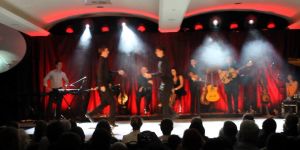
Be advised that this show is only available during the summer months. Check www.tradontheprom.com for the most up-to-date information about performance times and location.
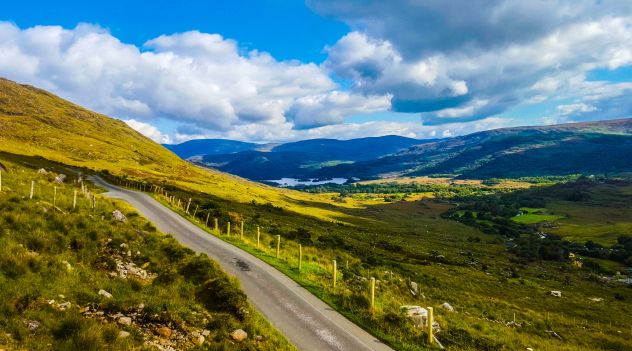
Comprising the Counties of Cork, Kerry and Limerick, Ireland's South West is one of Ireland's most popular tourist destinations and is home to many of its must-see tourist destinations. But this rich landscape also boasts a wealth of lesser-known attractions which, if relocated to almost any other place on Earth, would be considered unmissable regional highlights.
As a city, Cork retains a great deal of its historical and archaeological heritage. There is no finer example of this than Cork City Gaol, a towering edifice situated just 2km north-west of Patrick's Street. Opened in 1824, the gaol was heralded as "the finest in three kingdoms", though inmates at the time might not have agreed.
Located in the Sunday's Well area of Cork, Cork City Gaol is currently a museum and visitor attraction. Visitors can step back in time and witness what life would have been like for both prisoners and guards of Ireland's most famous gaol. Opened in 1824 to replace the old Gaol of Northgate Bridge it soon became seen as a marvel of architecture and a feat in logistics for its time.
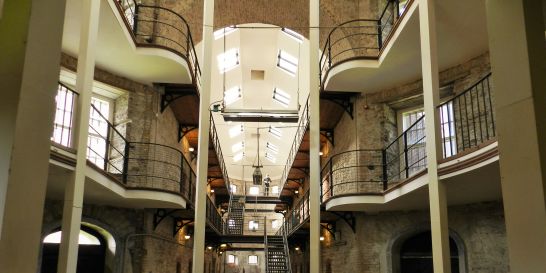
In its heyday of the 19th and early 20th Centauries, Cork City Gaol was home to some of Ireland's most notorious prisoners. During the early 1800s, the gaol's walls housed many temporary prisoners before they were taken to convict ships bound for Australia. Later in the same century, the gaol's guests included Young Irelanders Derry Lane, Terence Bellew McManus, Ralph and Isaac Varian. In the 20th century, its most famous prisoners included Fenians James Mountaine and Brian Dillion and revolutionary nationalist Countess Markievicz.
Today the gaol has been redesigned as a visitor centre, refurbishing the cells as they would have been hundreds of years ago. Original scrawlings on the walls of the cells added with eerily realistic wax figures of both guards and prisoners give the whole experience a very voyeuristic feel.
Unlike their predecessors, visitors today have the freedom to roam the gaol's catacombs for the price of €8 (concessions available). The tour takes visitors back in time, recreating the harsh realities of nineteenth century incarceration while exploring some of the underlying causes of contemporaneous crime.
The self-guided tour of the gaol is available in 13 different languages. Cork City Gaol has a souvenir shop, tourist information, picnic area and a café.
Be warned that this is an old stone building and prisoners here did not enjoy the benefits of central heating. Wrap up warm if you tend to feel the cold.
The self-guided tour of the gaol is available in 13 different languages. Cork City Gaol has a souvenir shop, tourist information, picnic area and a cafe.
The most up-to-date opening hours can be found here:.
Unlike their predecessors, visitors today have the freedom to roam the gaol's catacombs for the price of €10 (concessions available). The tour takes visitors back in time, recreating the harsh realities of nineteenth century incarceration while exploring some of the underlying causes of contemporaneous crime. Audio guides are available for €2 extra.
Bring your Euro and a sense of curiosity as you explore the small, Bohemian shops, great restaurants and pubs, which line the narrow streets. A favourite destination for international and Irish visitors, Kinsale is hugely popular on our own Ireland tour vacations.
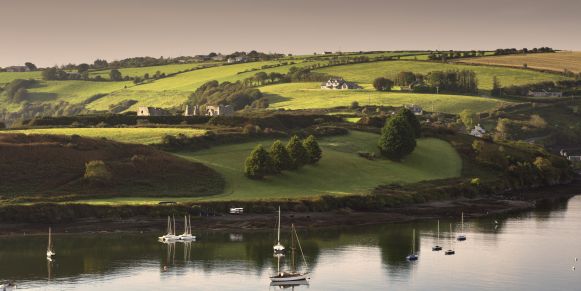
Travel magazine, Condé Nast, recently hailed Kinsale as one of Ireland's Most Beautiful Villages. Kinsale, located only 25km from Cork City is also the start/finish point of the Wild Atlantic Way and has been named 'The Gourmet Capital of Ireland'.
The tourist information offers maps of the narrow shopping streets which surround it in Kinsale centre. This is the starting point for most of the local walking tours. There is a beautiful coastal walk leading to Charles Fort.
Take one of the guided walking tours leaving in front of the tourist office, if you want to learn more about the rich history of Kinsale.
Built in 1845 the Cork Public Museum known then as The Shrubberies is located on the grounds of Fitzgerald Park. It was originally built by the Beamish family and was for years their family home. Cork Corporation eventually purchased the house and its surrounding land and used it as a showcase for the Cork International Exhibition of 1902 and 1903.
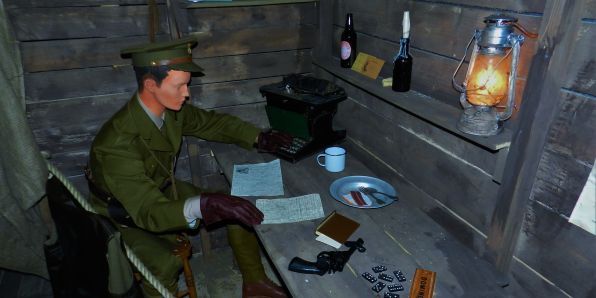
The museum officially opened in 1910 but after the burning of Cork City in 1920 it was used as the city's Municipal Offices. After being used as an Air Raid Protection office during World War II the museum finally opened in 1945.
Today, the Museum gives an expansive history of Cork and covers a wide selection of topics. Everything from barrel-top caravans to costumes of the 18th century, from Ireland's oldest shovel to a selection of Cork Silver can be found within the museum exhibitions.
The Riverside Café has recently opened within the Museum and gives visitors the perfect opportunity to enjoy the marvellous views. Cork Public Museum really has something for all ages and, if the weather holds up, a walk around the magnificent Fitzgerald Park is a must. Entry to the museum is free and you can find out more about the opening hours here.
A good museum for those with children. It's quite small and interactive. If they get bored or restless, the park outside is a great place for them to let off steam.
Opened to the public in 1906 and has since become a bustling attraction for both visitors to Cork City and locals alike. The magnificent gardens of the houses of Sunday's Well can be seen from one side of the Museum while the roadside view is flanked by buildings owned by University College Cork.
The Franciscan Well Brewery was founded in 1998 by Shane Long. It was built on the site of an old Franciscan Monastery. It is said that the well within this monastery had was given to curing the ailments of those who drank from it. People would come from across Ireland to make use of its miraculous powers.
Brewers, operating from the well today, still harness their unique output while adding modern technology and techniques learned from across Europe. It is currently Ireland Number 1 Craft Brewery. The Franciscan Well has collaborated with fellow Cork drink makers Jameson Whiskey to create a truly Corkonian beverage a Jameson-Aged Stout.
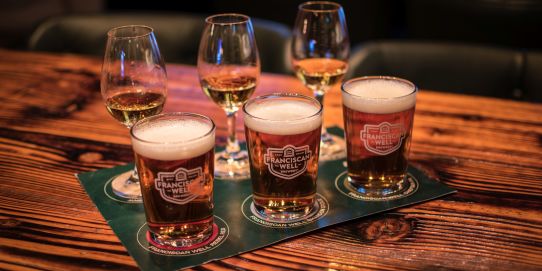
The brewery is where new drink ideas are formed and if they pass the brewers standards they are then served up at the Brew Pub in Cork City. If they are successful here then they will be exported further afield.
The Brew Pub, located within the original brewery on Cork City's North Mall, is currently one of the city's hot spots. It's a modern pub with a historical twist. The original brewing vat sits in the middle of the beer garden, alongside a huge pizza oven. The latest creations from the brewery are tested by the clientele and, if the weather holds out, entire evenings can be spent arguing about the best pizza and beer combination.
The inside of the pub, built on the burial ground of the old monastery, is also a fantastic spot to sample some of Cork's finest delights ...as long as you don't mind the occasional ghost.
Arrive hungry and try the freshly baked pizza which is available in the beer garden out back. Delicious, salty dough that makes you want to linger for just one more trip to the bar!
We couldn't resist visiting this amazing brewery ourselves to sample the legendary beers and pizza. Click here to find out how our visit went.
Ideal for a lunchtime stop more than a full-day excursion, Kenmare and Sneem both give a great insight into the relaxed pace of life which characterises this part of Ireland. Pull up a chair and take your time over a nice coffee ... or maybe a Guinness. A farmers market with local produce is held every Tuesday from June to September in Sneem.
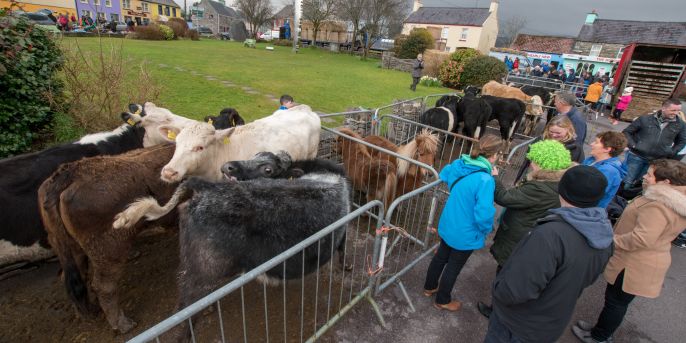
The more spiritually-minded might enjoy a detour to Kenmare Stone Circle. But some visitors find the €2 entrance fee to be an all-too-earthly welcome to such a mystical spot.
A living-history museum, Kerry Bog Village offers a heritage-award-winning insight into the harsh realities of life for the rural poor in famine-ravaged 18th-century Ireland. Thatched cottages within the village are decorated and furnished to represent, with well-researched exactitude, the real-life experiences of those who lived their lives in this part of Ireland during the nation's harshest times. A valuable and rewarding trip if you want to understand this chapter of Ireland's history.
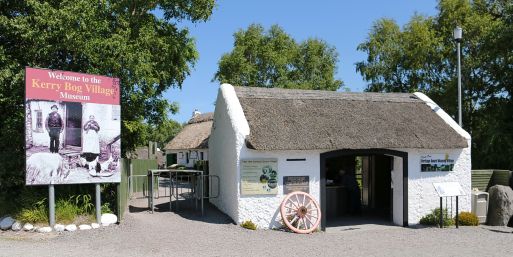
Stop for an Irish coffee to warm the cockles!
Situated on the N70, half way between Glenbeigh and Killorgin. Next to the Bog village you will find the Red Fox Inn Bar and Restaurant where you can buy a ticket if nobody is at the Gate to the Bog Village. Comprehensive booklets are available in different languages at the museum entrance.
Open 7 days a week from 09:00 to 18:00.
Adult will pay 6.50 euro and children 4.50 euro to enter the village and explore the 18th century way of life.
Skellig Michael, also known as Great Skellig, is a rocky outcrop island located 11.6 km to the west of the Iveragh Peninsula in Country Kerry. Sceilig Bheag (Little Skellig), its twin island is small and completely inaccessible. Skellig Michael is a world heritage site and was used as a monastic settlement by monks in the 7th century. Hollywood came calling to the island in 2014 when Episode VII of the Star Wars franchise chose it as a location for its final scene. The location was chosen for its otherworldly appearance thanks to its unique combination of Old Red Sandstone and compressed slate.
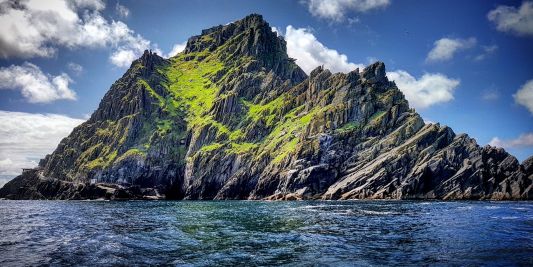
To visit Skellig Michael you will have to book a landing tour with one of the boat operators. We advise to book your tour well in advance as only 180 people are allowed to access the island each day. The landing tours are subject to weather conditions and can be cancelled if they are bad. The boat trip normally takes around an hour and the visit to Skellig Michael approximately 2,5 hours. Most boat tours leave from Portmagee pier and are available from May to the beginning of October.
Visitors to Skellig Michael should be prepared for what is a very tough ascent to the summit. The stone steps can be dangerous when wet and there are no handrails. This ascent is only advisable for people free of any mobility issues.
Elizabeth Fort was built in 1601 by Sir George Carewan and was named after Queen Elizabeth I. It is located outside the medieval walls of Cork City, Originally built on wood, stone and mud it is torn down within two years by the people of Cork after the death of Queen Elizabeth. English reinforcements are brought in and seize control. The people of Cork are forced to pay for the forts reconstruction
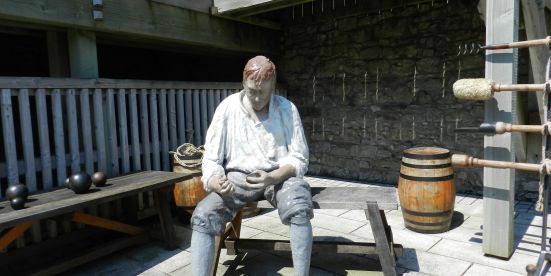
In 1626 the fort is rebuilt in stone. The design takes on the present-day star shape and the majority of the fort from this rebuild survives today. Oliver Cromwell orders the fort walls the be heightened in 1650.
During the 18th century, the fort is used as an army barracks. Including the barracks in the nearby Barrack Street, there are 750 soldiers housed here. In the early 19th century the fort is used as a prison for convicts waiting on transportation to Australia. In 1929 the Fort became a Garda station and was in use as such up until 2013.
Today the Fort is a free visitor attraction and a fascinating step back into history. There are different aspects of each of the stages of the fort's history including statues of soldiers, cannons and model radio control rooms. Probably the most spectacular part of the tour today is the view that visitors receive of Cork City and the nearby St.Finbarr's Cathedral.
Parts of the fort, the car park and the restrooms are all wheelchair accessible, making this one of the city's more appealing historic buildings for those with lower mobility.
General admission is free of charge and the fort is open from Monday to Saturday from 10:00 to 17:00. The opening hours on Sunday are 12:00 to 17:00. A guided tour starts at 13:00 every day and costs 3 euro.
The English Market is a food market that connects Princes Steet and The Grand Parade in Cork City. It has been in its present location, in one form or another, since 1788. The English Market is closed on Sundays, but open on all the other weekdays.
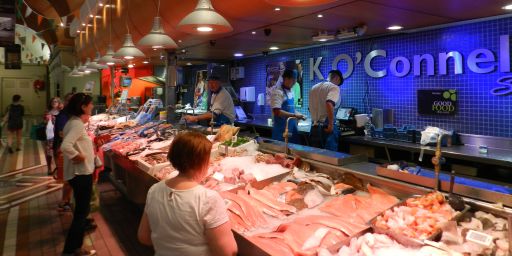
The name 'The English Market' was thought up in the 19th Century to differentiate it from The Irish Market (currently the Bodega on Cornmarket Street). From 1788 until 1980 the interior of the market changed very little. A fire on 19 June 1980 saw the Cork City Council undertake an extensive refurbishment of the property.
Today the market is a focal point for Cork's shoppers. The diversity of its products, friendliness of its traders and its overall aesthetic beauty ensure both locals and visitors to the Cork City flock to its stall on a daily basis. Queen Elizabeth II, on her 2011 Tour of Ireland, made sure to drop by The English Market to take a look around.
Breaks from shopping can also be enjoyed in the market's cafés. The ready to eat hot dogs, from one of the many butchers, are also an unmissable treat. So if you are in Cork and are looking for the best quality food, exotics produce or simply going for a stroll, a visit to The English Market is essential.
One amazing treat that we came across was in The English Market was The Chocolate Shop. A delightful one-stop shop for the finest chocolates found throughout Europe. They are completely independent and are not tied down to any particular manufacturer. They only stock chocolate that passes their standard... and wow, it's quite a standard. A must for any chocolate lover in Cork City.
If you're staying in self-catered accommodation in Cork, then the Market is a must. Lots of the produce available here is fresh meat and fish. A dream for any visiting foodie. There are also lots of ready-to-eat delights available to enjoy while you wander around.
Spike Island, lying off the coast of County Cork, is a 104-acre island. It is a five-minute ferry ride from the town of Cobh. Over the past 1,300 years, Spike Island has been home to a monastery, a fortress and, most recently, a prison. Fort Mitchel, built in the 18th century by the British Army to defend against enemy forces, dominates the landscape of the island. It is a 24-acre star-shaped Fortress that was used as a base by both the British and Irish armies.
Later, Fort Mitchel became a prison that could house up to 2,300 prisoners, both men and women, many of whom were later sent to finish their sentences in the USA or Australia. The fort was completed in 1850, and at the time was at the cutting edge of military technology. Today, it houses Ireland's largest military gun park. Fort Mitchel became a full-scale prison in 1847, in the middle of the Great Irish Famine. It had also been used as a place to hold prisoners, during Cromwell's time, but the rise in crime caused by the desperation of the Irish people during the Famine created the need for it to become a fully-fledged prison.
During the War of Independence (from 1919 to 1921), the prison held members of the Irish Volunteers. The most famous escape from the prison came during this time when Seán MacSwiney, Tom Malone and Con Twomey fled the island and were picked up in a boat by members of the IRA. In September 1985, the prison was the scene of a riot by prisoners, who eventually took over the island. Hours later, Gardaí arrived and seized back control. The island remained a prison and a military base under Irish rule until its eventual closure in 2004.
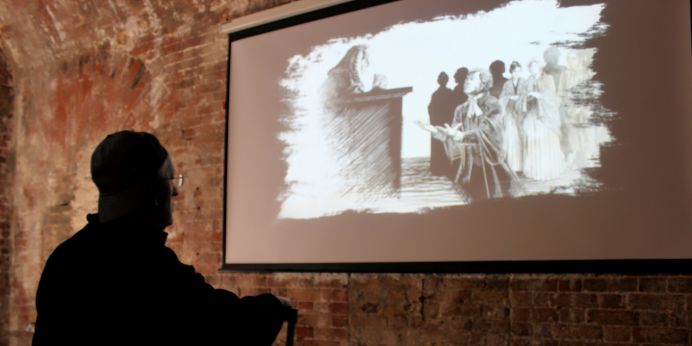
Today, Spike Island is one of Ireland's top tourist destinations. In fact, it was named the top tourist destination in Europe for 2017 at the World Travel Awards, beating off competition from the likes of the Eiffel Tower, the Colosseum and Buckingham Palace. Part of the reason for the success is the Spike Island tour guides. Full of enthusiasm, with genuine knowledge of all aspects of the island, you can't help but get lost in their stories and insight.
The sense of history you feel, as you walk through the prison's eerie corridors and into its cramped cells, is in equal measures overwhelming and exhilarating. Slash hooks and make-shift knives, used by prisoners during the riot of 1985, are on display, along with other utensils crafted by the prisoners during their day-to-day lives. The military side of things is well catered for too, with displays including uniforms, guns and countless documents. Perhaps the most impressive part of the tour is the military gun park. Featuring over a dozen exhibits, ranging from tanks to anti-aircraft artillery, it is the largest of its kind in Ireland and is a firm favourite with both military enthusiasts and children alike.
As the majority of the tour takes place outdoors, be sure to dress for the possibility of rain.
For those seeking out the eerier side of things, there's After Dark tours available, where you are taken through the prison corridors by candlelight.
As parking in Cobh can be relatively expensive, your best bet is to catch a train from Cork City and back. These run around every half hour and cost around €10 return.
An adult ticket to Spike Island costs 22 euro and includes the crossing on the ferry. Your return ferry is 3.5 hours later. A guided 45 minute tour is also included in your ticket. For more information and times follow this link.
Built in 1722 and overlooking North Gate Bridge, Shandon Tower is one of the most famous members of Cork City's skyline. Originally the site housed St. Mary's Church before it relocated to Shandon Street in 1693. At the start of the 18th century, the area around Shandon became the hub of the world's butter trade.
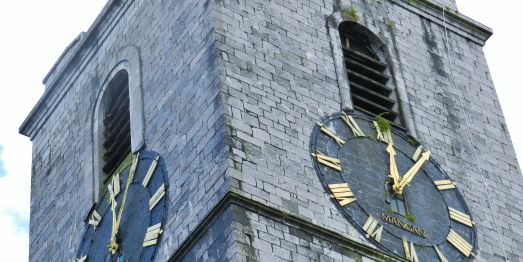
The famous Red and White sporting colours of the Cork teams in both Gaelic Football and Hurling are said to have their origins within the walls of Shandon Tower. The North and East walls are made of red sandstone while the South and West walls are made of white ashlar limestone.
The eight bells of The Shandon Tower are accessible through steep steps that take you up past the clockwork operating the four sized clockfaces. These clock faces became known locally as 'the four-faced liar' due to the four clocks seemingly never showing the same time. The salmon shaped weather vane known as 'the goldie fish' is four meters long and covered in gold leaf.
Caulfield Orpen designed the World War One memorial and is said to be one of the finest of its kind. There are five stunning stained-glass windows including St. Luke's window by Hubert McGoldrick. After climbing the 132 steps the views on Cork City are nothing short of breathtaking. Ringing the bells that are heard across the city of Cork is a once-in-a-lifetime experience.
A bucket-list experience for anyone who wants to ring church bells, but a less attractive prospect for anyone with mobility issues. You should arrive expecting lots of narrow steps.
Please Note that access to the tower depends on weather conditions and religious services in the church. Check their social media posts before your visit.
Open in June to September from 10:00 to 16:30, Monday to Saturday and from 11:30 to 16:00 on Sunday.
Open in March to April and October from 10:00 to 16:00, Monday to Saturday and from 11:30 to 16:00 on Sunday.
Open in November to February from 11:00 to 15:00, Monday to Saturday and from 11:30 to 15:00 on Sunday.
Adults will pay 4 euro and a ticket for children (aged 5 to 15), is 2 euro.
The Beara Peninsula runs along Ireland's southwest coast, between Kenmare Bay in County Kerry and Bantry Bay in County Cork. There is evidence of human settlements in the Beara Peninsula dating back to 3,000 B.C. In the 17th century, the area was used by the British army against the French invasion. There are currently 6,000 people living here. Before the Great Famine of the 1840s, there were almost 40,000. It is home to two mountain ranges, Slieve Miskish Mountains & Caha Mountains, and is part of the Wild Atlantic Way.
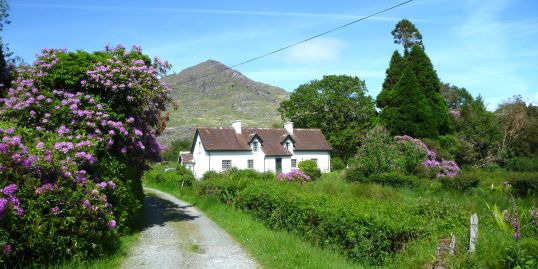
To get the most out of this beautiful and expansive landscape, a car will almost certainly be needed. Hire a car in Cork or seek out a local tour guide to show you the best local spots.
On hearing about the rejuvenating tranquility of this magical place, we couldn't resist a visit of our own. Find out more about our journey to the Beara Peninsula
Located 5 miles from the County Kerry town of Killarney, Torc Waterfall is one of the town's more spectacular tourist attractions. The surrounding woodland is heavily populated with red deer. A public hike leads from the waterfall to the top of Torc Mountain. The waterfall is one of the highlights of the 120-mile Kerry Walking tour.
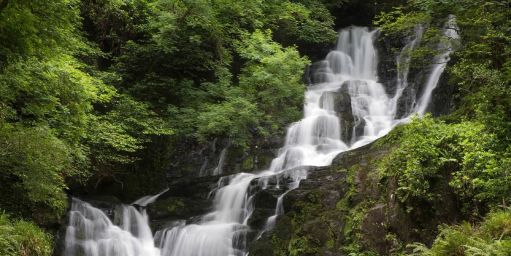
If you would like a slightly longer hike there is a loop trail that takes you up and around the falls for a beautiful view of the lake and then down into the meadow where you might even see wild deer.
There is a car park on the N71, located 300 meters from the waterfall. However it is tiny, so it can be hard to find a spot. There is another car park a bit further down the road. Please note that you will have to walk down a busy road if you park there.
Muckross House is located between two of the Lakes of Killarney, Muckross Lake and Lough Leane. It was designed by Scottish architect William Burn and was completed in 1843. The first occupants of Muckross House were Henry Arthur Herbert and his wife Mary Balfour. In total, the Tudor style house has 65 rooms. After paying for renovations to the house, in anticipation of Queen Victoria's visit in 1861, the Herbert family fell into financial difficulty. They sold the estate in 1899 to Arthur Guinness, great-grandson of the Guinness Brewery founder of the same.
Arthur Guinness never lived in the house, instead, he rented it out as a lodge for wealthy hunting groups. The estate was again sold in 1911 to a mining magnate from California, William Bowers Bourn. As a wedding present the estate was given by Bowers Bourn to his daughter Maud. After Maud's death, from pneumonia in 1929, Bowers Bourn, his wife and their son-in-law Arthur Rose Vincent donated Muckross house and its 11,000-acre grounds to the Irish state. It was to become Ireland's first National Park, known as "Bourn-Vincent Memorial Park" and went on to form the basis of what we know today as Killarney National Park.
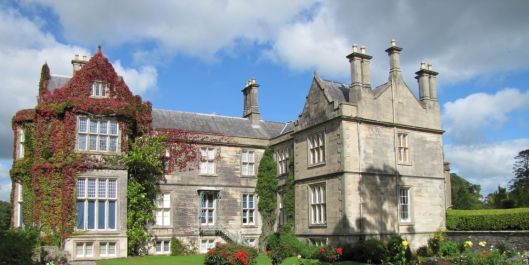
Today, Muckross House itself, as well as its gardens and traditional farms form the centre of Killarney National Park. The park is open daily, except for the Christmas period. A whole day can easily be filled on the grounds of Muckross House, not to mention the surrounding woodlands, mountains and lakes.
The house itself can only be viewed in the presence of a guide. For adults the cost is €9.25 or €15.50 if you'd like to include the traditional farms as well. Children under 12 go free. The attractions surrounding Muckross House, such as the park and the lakes, are all free to explore.
The Black Valley is an area of MacGillycuddy's Reeks in western County Kerry. MacGillycuddy's Reeks is seen as a remote part of Ireland. The area was the last part of Ireland to be connected with electricity and telephone networks, (1979). The valley is located between the Gap of Dunloe to the north and Moll's Gap to the south.
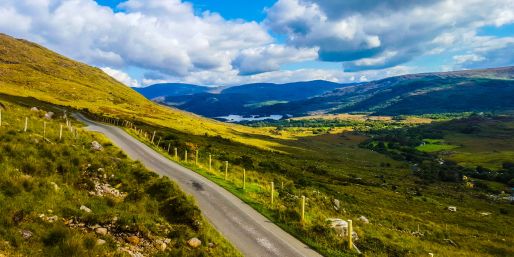
There are lots of B&Bs, hostels and other accommodation options in the area, making this a beautiful spot for a secluded overnight retreat. However, keep in mind that most pubs and eateries are 25-30 minutes' drive away.
The Gap of Dunloe is a mountain pass found between the Purple Mountain (to the east) and the MacGillycuddy Reeks (to the west) formed by glacial flows. The river Loe, from which the Gap takes its name, runs through it.
One of the stand out features in the Gap of Dunloe is the Wishing Well, located between Bridge Coosaun Lough and Black Lake. Locals will tell you making a wish here is guaranteed to come true. There is a road running through the gap, going from Kate Kearney's Cottage in the north to and descending to the Black Valley in the south, which runs approximately 11 km. You can hire private jaunting cars from Kate Kearney's Cottage that will take you on a tour of the Gap of Dunloe and back.
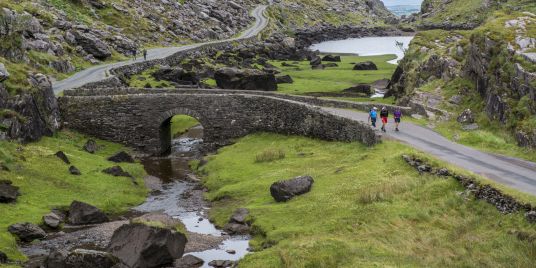
It is recommended that you either drive or take a jaunting car through the Gap of Dunloe as the walk long and features plenty of hills. There are designated spot where you can stop, take photos and even have a picnic. If your are not used to driving on Irish country roads, it would be advisable to take the pony and trap option as meeting oncoming traffic will require lots of manoeuvring and reversing.
Inch Beach, contrary to its name, is a 3-mile long blue flag beach. It is not one of the best-kept secrets but, due to its remote location, is usually only visited by people in its vicinity. If you are lucky enough to be nearby on a good weather day you won't want to be anywhere else on the planet. It is a haven for bathing, angling and water sports. Inch Beach is located 14 miles east of the town of Dingle, County Kerry.
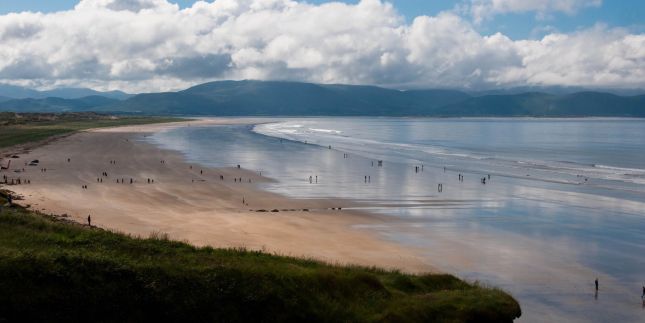
This is a very popular spot for kite surfing but many visitors will get just as much enjoyment by simply packing a camera!
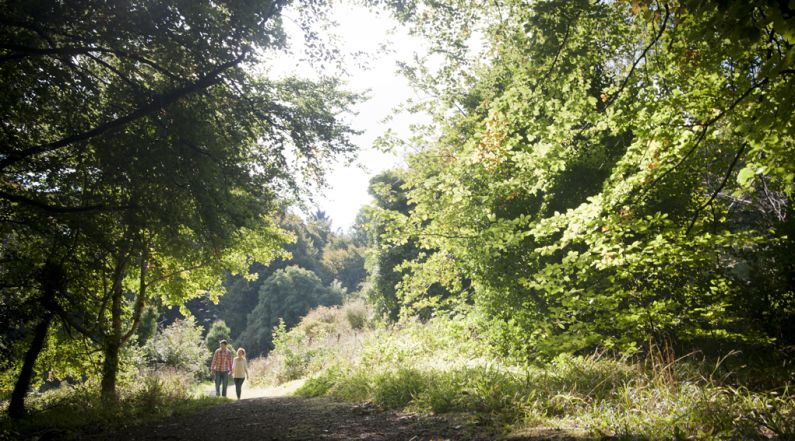
Signature Northern Irish attractions like the Giant's Causeway and the Titanic Exhibition are firm fixtures on most visitors' bucket lists, especially since the region has, in peace, claimed its rightful stake as a go-to tour destination. But for those staying a little longer and looking beyond the headline attractions, there awaits a rich tapestry of historical and natural treasures.
Although their history spans over a century, and although they began as a unionist motif, it was in the early 1980s that Belfast's iconic murals would gain the prominence that now draws tourists, when Republican depictions of the infamous hunger strike of Bobby Sands and his follow prisoners began to spread across Republican districts of the city.

For two decades, murals on both sides of the city voiced the deep divisions between communities whose differences seemed insurmountable. On the Unionist side, the imagery was chiefly militaristic, with slogans like "No Surrender" a near-constant refrain. In Republican communities, depictions drew on a more diverse palette of cultural and historical symbolism, but their message was no less clear and no less divisive.
To get the most out of a trip to Belfast and its rich history, a local tour guide is recommended.
Lording it over an open expanse of fountains and marbled stone, Guildhall rises to majestic heights to take its place on the Derry skyline. A £10m renovation in 2013 has brought the very best out of what was already a magnificent structure of stone and stained-glass. As well serving an important civic function for the city (it was the seat of the historic Bloody Sunday Inquiry headed by Lord Saville from 2000 to 2005), Guildhall has become a nexus for Derry tourism and a focal point for most visits here. View the Visit Derry website for more information.
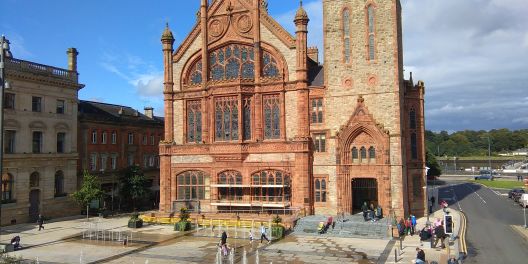
If you're are heading to Derry specifically to see the Guildhall, then be sure to call ahead and check what times are best to visit. Some days, areas of the building are closed for private functions.
Ireland's first attempt at town planning, modelled in 1545 on the French town of Vitry-le-François. Visit derrywalls.com for further information. Those interested in architecture should allow time to visit St Columb's Cathedral, situated within the city walls.

A good local tour guide is recommended to get the most of this historic city and its iconic fortifications.
A handy stop-off point between The Giant's Causeway and Ballycastle, the Carrick-a-Rede rope bridge is a dizzying experience to be enjoyed or studiously avoided, depending on your head for heights. Looking like something from an Indiana Jones movie, the rope bridge conveys locals and tourists alike across the 20-metre chasm between the sea cliffs and the island of Carrick-a-Rede.
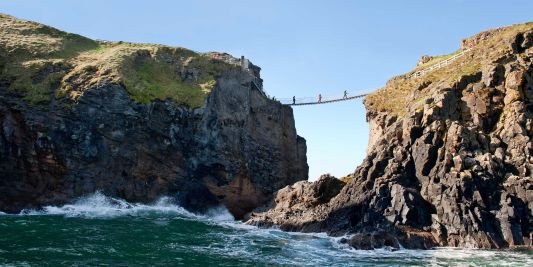
The bridge which draws visitors today is actually a stronger and safer version of the original which was put up every spring by fishermen whose nets, cast from the island's northern cliffs, would intercept migrating salmon. Today, there is a small visitor centre, a café and a car park.
The bridge itself is very sturdy and only bounces if people jump while crossing it. Take a deep breath and go for it!
Glenariff Waterfall Walk is one of a series of walks in the Glenariff Forest Park, County Antrim. The forest is laid out with pathways and steps for people to explore. It might take up to 2 hours walking to reach the payoff, the waterfall, but it is well worth the wait. The walk which leads to the waterfall is a little strenuous and is not advisable for everyone. The steps are steeper and can become slippery on approach.
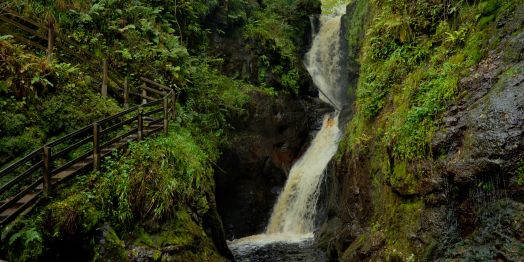
All trails are well-signposted and have clearly defined pathways. Bring sturdy shoes and a sense of adventure.
Ballymacdermott Court Tomb, located on Ballymacdermott Mountain in County Armagh, is a megalith portal tomb. It dates from between 4000 and 2500 B.C. The tomb was excavated twice, in 1816 and 1962. The first excavation unearthed pulverised human bones in an urn while the second discovered human cremations. During the second excavation, archaeologists found that some of the stones in the tomb had been recently disturbed, locals informed them that this was caused by an American tank during World War II.
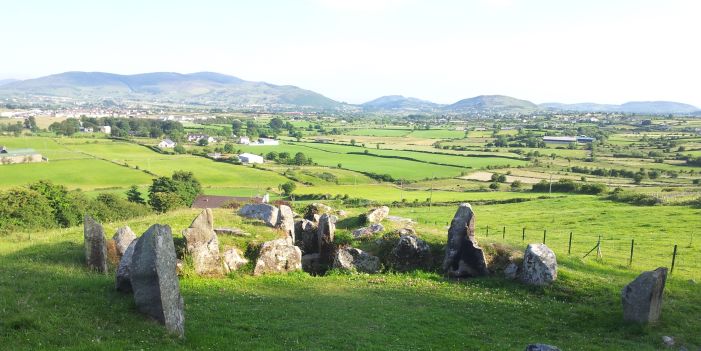
A beautiful spot but fairly exposed so be sure to wrap up on a blustery day.
The Stairway to Heaven, officially known as the Cuilcagh Mountain Trail, is a 4 and a half-mile walkway through bogland in County Fermanagh. The walkway was constructed to protect the rare blanket bog that was being eroded by walkers in the area. The walkway ascends to over 550 metres to the Cuilcagh Mountain face.
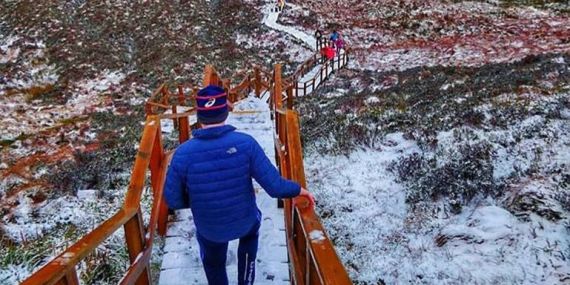
Bring cash for the carpark and a flask of something that warms the cockles while you take in the amazing views.
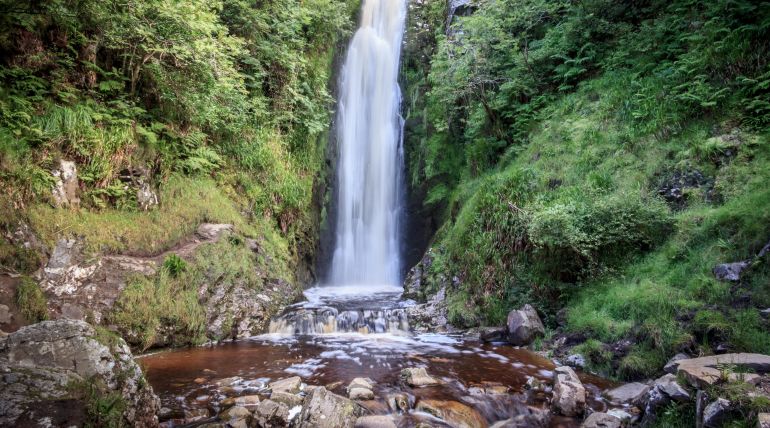
Much less frequently visited but so worth the trip, Ireland's North West is itself a hidden gem for tourists. So there is all the more satisfaction for those who venture here to uncover one of the most stunning landscapes to be found anywhere on Earth. Bring your walking shoes and a camera to capture the memory of this enchanted setting.
This part of Ireland has some fantastic country routes, and self-drive visitors to Sligo and Donegal will not be short of photo opportunities along the way. One which is sure to please is The Glengesh Pass which runs from Ardara to Glencolumbcille. Passengers with a delicate stomach might want to take their travel sickness tablets before they embark on this narrow and tumbling sequence of tight hairpins, but if you keep your camera at hand you will have every excuse.
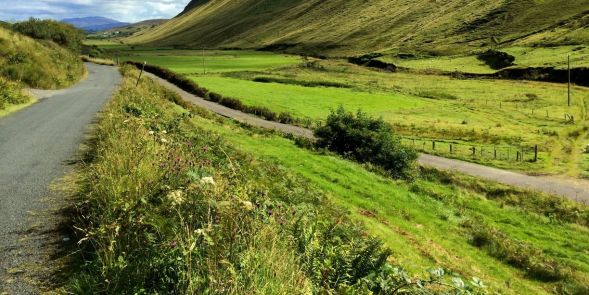
During the months of October through February, this area of the Northwest can be pitch black by as early as 5 pm. Roads can become icy in patches and snowstorms are not uncommon. If you are doing a self-drive tour, sticking to the summer months and traveling during daylight would be advisable.
This ascent will require more than just your walking boots: a knowledge of mountain safety and possibly a local guide might be called for, especially on days where the weather is anything less than bright and dry. At a fairly towering 752 metres, Errigal Mountain is a pleasant but challenging climb for any hobbyist hillwalker, and the main paths are not of the best quality. A hike on Errigal Mountain can really set your tour of Ireland apart.
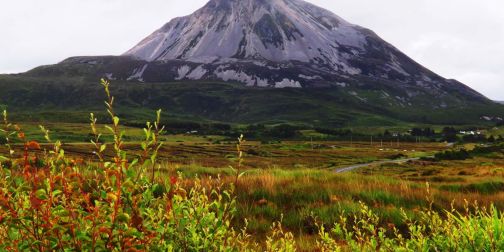
The start of the ascent will take you through a bog. The terrain here is very soft and can be slow and energy-sapping. A break after this initial section might be a good idea. In wet weather this 'slog through the bog' will become an even tougher challenge.
With less mileage on the Wild Atlantic Way and a more inland location, County Leitrim is perhaps overshadowed by the neighbouring counties of Sligo and Donegal. But visitors who pass by without exploring the glens, lakes and loughs for which Leitrim is famed will most certainly be missing out. Find out more about Leitrim tourist attractions by visiting www.leitrimtourism.com.
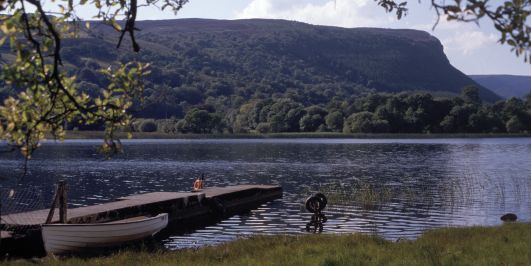
Nestled between the more popular destinations of counties of Donegal and Sligo, county Leitrim could be the more cost effective choice for accommodation during your Northwestern exploration.
If you have enjoyed the Glengesh Pass, then rest up and take the family on the kind of adventure that demands a barbecue and a bucket and spade. Although weather-dependent, this is an old-school family day out which won't cost much but is sure to please. (Drivers will have to pay €3 for parking. Don't go home without eating an ice-cream!)
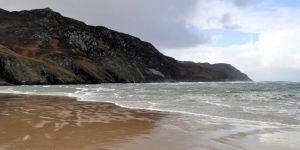
The beach itself looks like it belongs in a different hemisphere: stretches of soft white sand are gently ironed flat by an enticing turquoise sea. Please note, swimming in this area can be dangerous and is not advised.
The caves are no less beautiful than the beach itself, with multicoloured rock formations forming an artistic array of dizzying shapes. A very atmospheric space away from the more established tourist destinations.
While the beach looks tropical at times, the water seems to always be on the very chilly side. It's the ideal location for dogs and kids. Be sure to bring towels, even if you are not planning on swimming, as sand seems to blow continuously and can leave your car in need of a good vacuum cleaning.
Situated 50 minutes' drive from Donegal Town or 25 minutes from the fishing port of Killybegs, the Glencolmcille Folk Village (also known as Father McDyer's Folk Village Museum) is a thatched-roof replica of a traditional Irish rural village. Comprising a number of small cottages, called a "clachan", the village atop a hillside with a commanding sea view over Glen Bay Beach in the Gaeltacht (Irish-speaking area) of South West Donegal. A popular living-history museum, Glencolmcille was built and is maintained by the people of the local area.
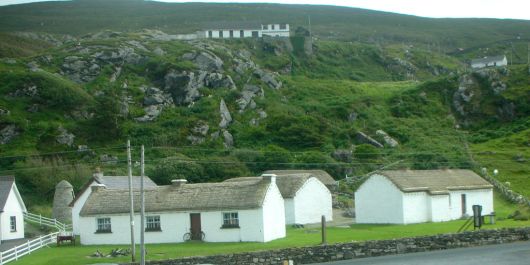
While the exhibition is fascinating, there is not always a human guide to show you through. There is a lot of text and graphical information that, without a guide, can demand your full concentration.
The Caves of Kesh are 16 caves, some of which are interconnected, found in the village of Keash, County Sligo. Remains of humans and animals dating back to as far as 10,000 B.C have been found in the caves during excavations in the 20th century. Amazingly, remains of reindeer were found on top of burnt charcoal, suggesting that the animal had survived in Ireland until the human period.
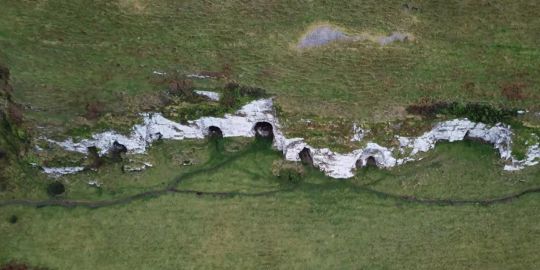
The climb up to the caves is fairly strenuous. A reasonable level of fitness and some sturdy shoes are recommended for this rewarding excursion.
The Glenevin Waterfall can be found as part of the Glenevein Valley walk in County Donegal. There are newly refurbished picnic areas dotted throughout the walk and there are footbridges and stepping stones in place to navigate the various streams running along the walk.
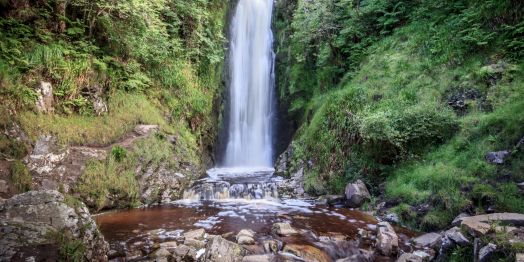
There are toilets on-site, as well as a café. The walk to the waterfall is a very gentle 1km, manageable for most walkers.
We use cookies to enhance your experience on our website. By continuing to browse, you agree to our use of cookies. Learn more...

As a local Irish company, we at My Ireland Tour are passionate about our country and our local community. We're thrilled that you're interested in visiting the place we call home. That's why we put together this definitive travel guide for anyone who wants to come to Ireland and discover this amazing place for themselves.
This is a completely free resource covering everything from top tourist attractions to the nearest yoga centre. We hope it helps!

Stay updated with exclusive travel tips, special offers and inspiration for your tour vacation in Ireland.
Copyright © My Ireland Tour 2014-2025. All Rights Reserved.